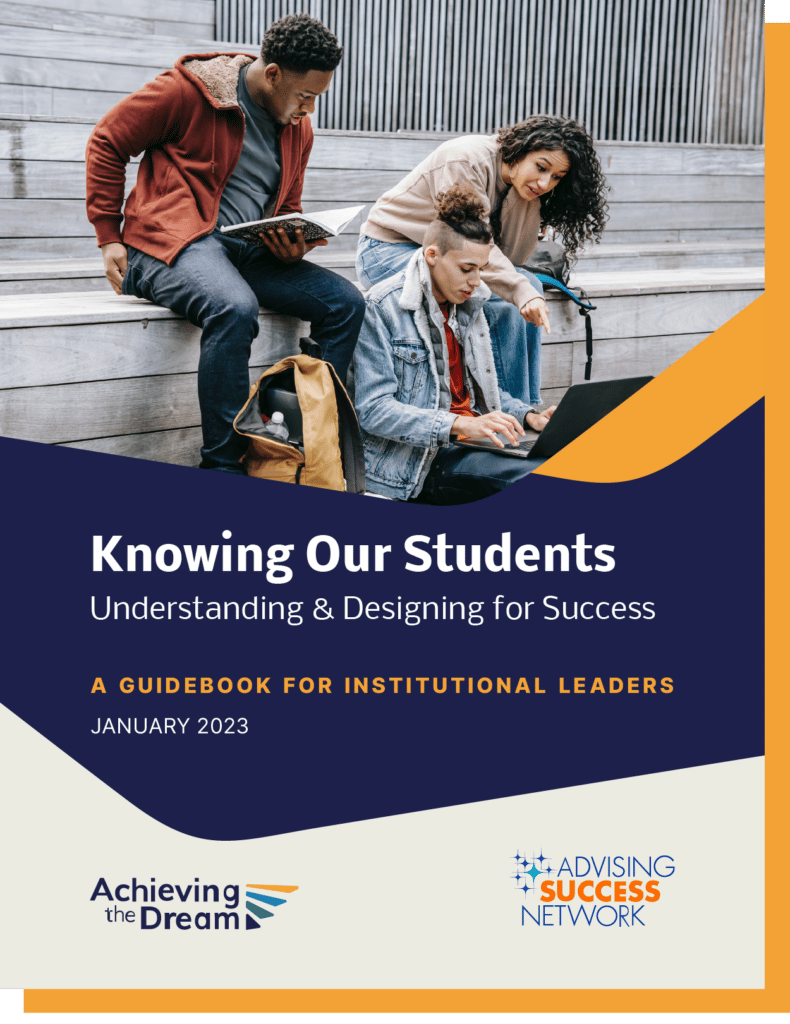For the past few decades, institutions of higher education have been making strides in the collection and use of data to inform their decisions. From student surveys to predictive analytics, institutions collect more information on how their students move through their educational journey than ever before. But while data has helped develop a more sophisticated understanding of institutional effectiveness, the understanding of students has remained somewhat one-dimensional.
Today, there is no typical student. Enrollment of diverse students has increased over the past few decades, and student identities have changed from what was once considered “traditional.” The Knowing Our Students: Understanding & Designing for Success guidebook outlines resources that colleges can use and steps they can take to identify who their students are.
First published in 2021, Achieving the Dream and Advising Success Network released an updated edition of the Knowing Our Students guidebook in 2023.
This guidebook stands as a resource for institutional leaders and student success teams who are ready to engage in a new dialogue about the students they serve and eager to learn practical strategies from national experts and peer institutions. It shares the latest knowledge, examples, and tools about:
- What it means to really know students
- What data points are useful
- How these data can be used effectively
- Challenges that may arise
- Strategies to overcome these challenges
Knowing Our Students: Understanding & Designing for Success
January 2023 Edition
Download the GuidebookThis edition includes a “How to Use This Guidebook” companion to walk leaders and educators through each step in the guide.
Download the CompanionPractitioners working through the guidebook are also encouraged to use our interactive tools:
Design Brief Worksheet Student Needs Assessment WorksheetPractical tools and resources
Each section provides tips, tools, guidelines, and resources to promote a deeper understanding of students. Questions and tools are provided at the end of each section, to help apply the learnings from that section to one’s own work. Examples from the field illustrate how institutions are working to successfully deepen their understanding of their students, how these data are used in decision-making, and what they are learning along the way.
Collaborative effort
Guidebook writers include ATD leaders and coaches Dr. Laurie Fladd, Laurie Heacock, Jennifer Hill-Kelley, Julia Lawton, Dr. Sharmaine Pechac, Dr. Devora Shamah, and Amber Woodruff. Advising Success Network (ASN) partner organizations who also contributed input to ensure the guidebook is comprehensive and relevant to a wide range of institutions include American Association of State Colleges and Universities, EDUCAUSE, NACADA: The Global Community for Academic Advising and The National Resource Center for the First Year Experience and Students in Transition.
Continual innovation
As with any guidebook, there are still questions the field needs to answer to develop a more comprehensive guide. As such, in subsequent years, this guidebook will continue to be updated as more is learned about designing our institutions to serve the whole student.


